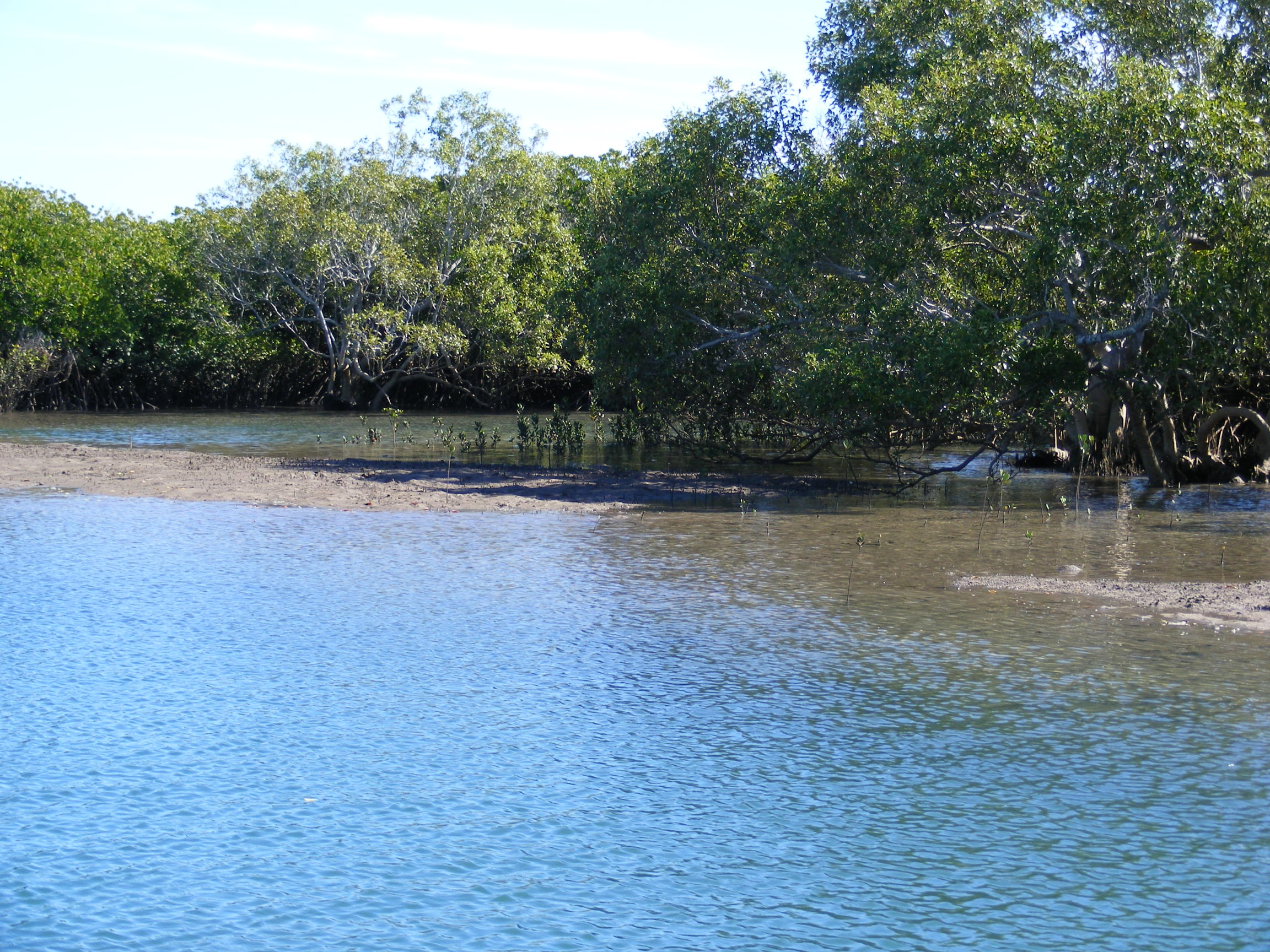|
|
Avicennia-dominated mangrovesShort descriptionMangrove forest dominated by Avicennia marina. Disclaimer: Ecosystem type descriptions are based on biophysical attributes identified in Central Queensland through expert advice and supported by scientific literature. Not all ecosystem types are mapped based on current inventory, and many of the ecosystems described here may also occur in other parts of Queensland.
Classification categoriesSelect from the links below to view related ecosystem type categories Long descriptionMangrove forest dominated by Avicennia marina subsp. australasica, typically along the seaward margin of mangrove forests. Occurs on Quaternary estuarine deposits, on intertidal flats which are often dissected by tidal streams. Soils are often deep saline clays[10]. Avicennia marina typically dominates pioneering mangrove communities with more unstable sediments, whereas Rhizophora spp. typically dominate areas with more stable sediments[10]. Mangroves are not a taxonomically unified group, but rather an ecological group that arose through convergent evolution and includes several different families. They are characterised by trees that are adapted to tolerate tidal inundation. Special valuesMangrove communities provide a wide variety of services, including:
Avicennia pneumatophores provide structural habitat for a range of fish, crustaceans and molluscs (including oysters and barnacles). The water mouse has also been observed hunting in pneumatophores, and nesting in the landward margin of mangrove forests. Dense growth of the red algae Catenella nipae on mangrove pneumatophores provides food for recreationally important herbivorous fishes[3]. Diagnostic attributesInundation 'Intertidal – Lower low', 'Intertidal – Mid low', 'Intertidal – Upper low', 'Intertidal – Low undifferentiated', 'Intertidal – Lower medium', 'Intertidal – Upper-medium', 'Intertidal – Medium undifferentiated', 'Intertidal – High', 'Intertidal – Undifferentiated', 'Intertidal – High undifferentiated', although mangroves usually occur at mean sea level and above. Structural macrobiota 'Mangroves – Avicennia' QualifiersNo qualifiers mapped, however Period and Trend are relevant as Rhizophora forests typically extend from the seaward boundary and can be influenced by sea level rise. Relevant attributes associated with change (e.g. mangrove dieback) in Moreton Bay include Freshwater source, Freshwater volume and Trace elements/nutrients. Relevant attributes associated with change for Gulf of Carpentaria include Inundation (sea level changes associated with extreme weather events)[5][8]. DistributionThe north-east coast of Australia was close to the centre of mangrove origin and dispersal. The climate is similar to that under which they first evolved, and the sheltered shallow waters of numerous estuaries are ideal for growth[9][6]. Avicennia marina is the most common and widespread mangrove along the mainland coast of Australia, extending from Corner Inlet in Victoria to Bunbury in Western Australia[7]. The following relates to distribution of this ecosystem type within the Central Queensland mapping area:
CommentsOther relevant attributes include Consolidation, Energy and Sediment texture as mangrove communities typically occur on unconsolidated muds and fine sediments in low energy environments. Additional InformationMoreton Bay mangroves and associated communities interactive map viewer - WetlandInfo Mangroves - Queensland Government Common mangroves - Department of Agriculture and Fisheries Mangrove community dynamics - OzCoasts Mangroves and associated communities of Moreton Bay - WetlandInfo Serious Dieback of Mangroves around Mackay - University of Queensland References
Last updated: 12 July 2019 This page should be cited as: Department of Environment, Science and Innovation, Queensland (2019) Avicennia-dominated mangroves, WetlandInfo website, accessed 25 June 2024. Available at: https://wetlandinfo.des.qld.gov.au/wetlands/ecology/aquatic-ecosystems-natural/estuarine-marine/descriptions/8/ |

 — Department of Environment, Science and Innovation
— Department of Environment, Science and Innovation


